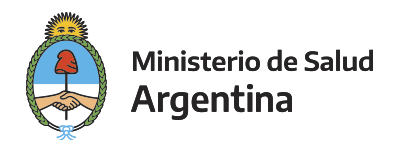Please use this identifier to cite or link to this item:
http://sgc.anlis.gob.ar/handle/123456789/2006| Title: | Genotypic characterization of Escherichia coli O157:H7 strains that cause diarrhea and hemolytic uremic syndrome in Neuquén, Argentina | Authors: | Pianciola, Luis Chinen, Isabel Mazzeo, Melina Miliwebsky, Elizabeth González, Gladys Müller, Constanza Carbonari, Carolina C Navello, Mariano Zitta, Eugenia Rivas, Marta |
Keywords: | Escherichia coli;Argentina;Análisis por Conglomerados;Diarrea;Infecciones por Escherichia coli;Escherichia coli O157;Proteínas de Escherichia coli;Enfermedades Transmitidas por los Alimentos;Genotipo;Síndrome Hemolítico-Urémico;Humanos;Epidemiología Molecular;Tipificación Molecular;Factores de Virulencia | Issue Date: | May-2014 | Publisher: | Elsevier Urban and Fischer |
Project: | datasets | Journal: | International journal of medical microbiology : IJMM | Abstract: | Shiga toxin-producing Escherichia coli (STEC) are important food-borne pathogens associated with cases of diarrhea, hemorrhagic colitis and hemolytic uremic syndrome (HUS). E. coli O157:H7 is the dominant serotype in Argentina and also in Neuquén Province, in which HUS incidence is above the national average, with a maximum of 28.6 cases per 100,000 children less than 5 years old reported in 1998. The aim of this study was to characterize a collection of 70 STEC O157 strains isolated from patients with diarrhea and HUS treated in the province of Neuquén, Argentina, between 1998 and 2011. All strains harbored eae, ehxA, rfbO157, and fliCH7 genes, and stx2a/stx2c (78.7%) was the predominant genotype. A total of 64 (91.4%) STEC O157 strains belonged to the hypervirulent clade 8 tested using both 4 and 32 SNP typing schemes. The strains showed the highest values reported in the literature for 6 of the 7 virulence determinants described in the TW14359 O157 strain associated with the raw spinach outbreak in the U.S. in 2006. Clade 8 strains were strongly associated with two of them: ECSP_3286, factor encoding an outer membrane protein that facilitates the transport of the heme complex (P=0.001), and in particular extracellular factor ECSP_2870/2872, coding proteins related to adaptation to plant hosts (P=0.000004). The q933 allele, which has been related to high toxin production, was present in 97.1% of the strains studied for the anti-terminator Q gene. In summary, this study describes, for the first time in Argentina, the almost exclusive circulation of strains belonging to the hypervirulent clade 8, and also the presence of putative virulence factors in higher frequencies than those reported worldwide. These data may help to understand the causes of the particular epidemiological situation related to HUS in Neuquén Province. |
Description: | Fil: Pianciola, Luis. Subsecretaría de Salud de Neuquén. Laboratorio Central; Argentina. Fil: Chinen, Isabel. ANLIS Dr.C.G.Malbrán. Instituto Nacional de Enfermedades Infecciosas. Servicio Fisiopatogenia; Argentina. Fil: Mazzeo, Melina. Subsecretaría de Salud de Neuquén. Laboratorio Central; Argentina. Fil: Miliwebsky, Elizabeth. ANLIS Dr.C.G.Malbrán. Instituto Nacional de Enfermedades Infecciosas. Servicio Fisiopatogenia; Argentina. Fil: González, Gladys. Hospital "Dr. Horacio Heller". Laboratorio de Microbiología; Argentina. Fil: Müller, Constanza. Subsecretaría de Salud de Neuquén. Laboratorio Central; Argentina. Fil: Carbonari, Carolina. ANLIS Dr.C.G.Malbrán. Instituto Nacional de Enfermedades Infecciosas. Servicio Fisiopatogenia; Argentina. Fil: Navello, Mariano. Subsecretaría de Salud de Neuquén. Laboratorio Central; Argentina. Fil: Zitta, Eugenia. Subsecretaría de Salud de Neuquén. Laboratorio Central; Argentina. Fil: Rivas, Marta. ANLIS Dr.C.G.Malbrán. Instituto Nacional de Enfermedades Infecciosas. Servicio Fisiopatogenia; Argentina. |
URI: | http://sgc.anlis.gob.ar/handle/123456789/2006 | DOI: | 10.1016/j.ijmm.2014.02.011 | Rights: | Open Access |
| Appears in Collections: | Publicaciones INEI |
Show full item record
This item is licensed under a Creative Commons License


